The Stewart Site Collection
Artifacts
William Butz donated his collection of artifacts from the Stewart site to Skidmore College in 1991. The majority of the artifacts shown on the linked page were surface collected by him, although several of them were recovered as part of a controlled surface collection conducted by Skidmore College in 1992. The diagnostic points date from approximately 3000 BC to AD 1000.
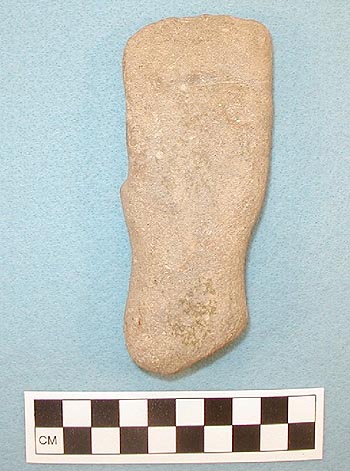
A ground stone celt
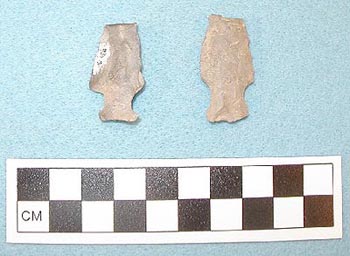
Normanskill Points
Two Normanskill points were identified at the Stewart Site. Normanskill points are slender, thick points of medium size, diagnostic of the Late Archaic period, dating from approximately 2500 to 2000 BC (Ritchie 1971:37). They are generally recovered from Eastern New York, along the Hudson River.
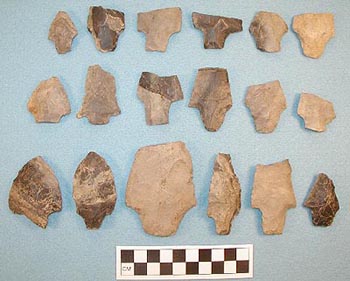
Assorted Snook Kill Points
The majority of diagnostic points found at the Stewart Site were Snook Kill (n=25). Most were not complete. The majority of the ones which were complete were bases. Snook Kill points are very broad, large, thick, contracted stemmed points ranging in size from 5.08 cm to 10.16 cm (2 to 4 in; Ritchie 1971:47). Snook Kill points are diagnostic of the Late Archaic Snook Kill phase which dates from approximately 1800 to 1600 BC (Justice 1987:160). Snook Kill points occur through much of the Northeast, including New Jersey, New York, Connecticut, Massachusetts, Vermont, and Eastern Pennsylvania (Justice 1987:160).
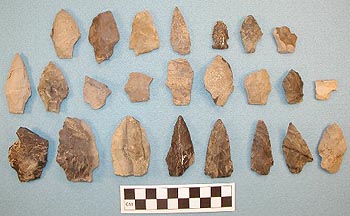
Untyped Hafted Bifaces
These bifaces have a hafting element present, but do not fit any known types.
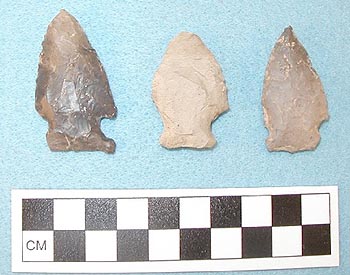
Brewerton Side-Notched Points
Brewerton Side-Notched points are broad, thick side-notched points of medium size.
Three were recovered from Stewart. They are the most common point of the Archaic Laurentian
Complex, dating to approximately 3000 BC, and are found all over New York State (Ritchie
1971:19).
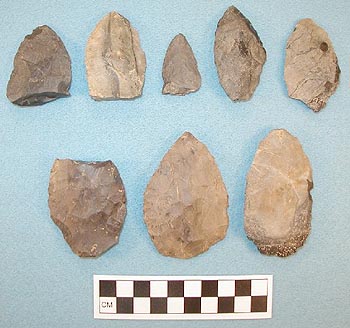
Bifaces
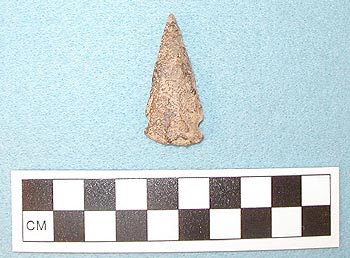
Meadowood Point
One Meadowood point was found at the Stewart Site. Meadowood points are very thin, medium to large side notched points (Ritchie 1971:35). Meadowood points are diagnostic of the Early Woodland Meadowood phase, dating between 1300 and 500 BC (Ritchie and Funk 1973:116).
Meadowood points are found in New York, Connecticut, Vermont, and other areas of the Northeast (Justice 1987:171).
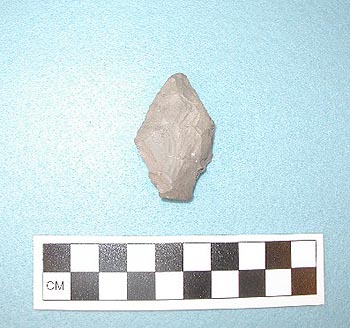
Jack's Reef Pentagonal Points
One Jack's Reef Pentagonal point recovered from the Stewart Site. Jack's Reef Pentagonal points are diagnostic of the Middle Woodland period, dating from approximately AD 500 to 1000. They occur in highest frequency in the Northeast (Justice 1987:215).
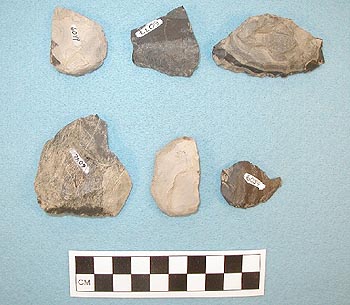
Assorted Scrapers
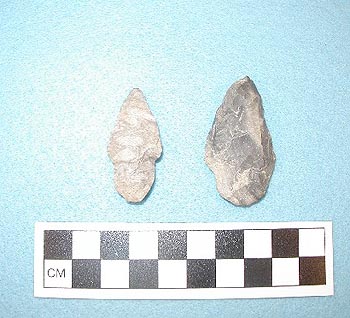
Lobate Contracting Stemmed Points
These points were categorized as Lobate Contracting Stemmed.One point measures 4.8cm (1.9 in.) in length, 2.6cm (1 in.) in width, and .9cm (.4 in) in thickness. The other point measures 4.1cm (1.6 in.) in length, 1.9cm (.7 in.) in width and .8cm (.3 in.) in thickness.
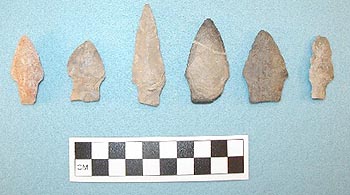
Lamoka Points
Lamoka points are small, narrow, thick points diagnostic of the Late Archaic Period, dating between approximately 1500 and 1000 BC (Ritchie 1971:29). Six Lamoka points were recovered from the Stewart Site. Lamoka points are usually found in Western New York and Northern Pennsylvania.
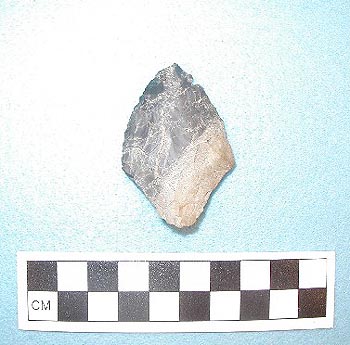
Rossville Point
One Rossville point was found at the Stewart Site. Rossville points are thick, lozenge-shaped points of medium size (Ritchie 1971:46). They are diagnostic of the very late Archaic, Transitional, and Early Woodland periods, dating from approximately 1500 to 100 BC. They are usually found in the Chesapeake Bay area, Southern New York, and New England.
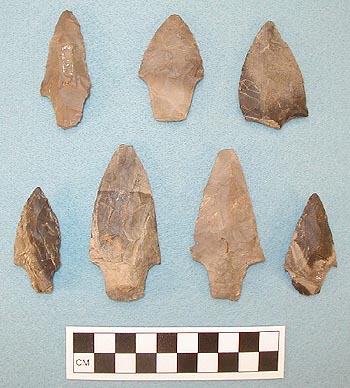
Assorted Sook Kill points
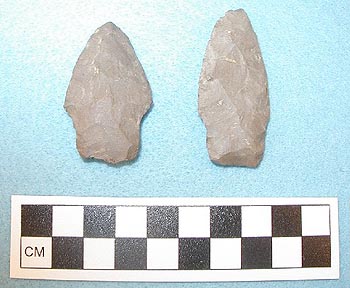
Fox Creek Stemmed Points
Fox Creek Stemmed points are broad and heavy, medium to large in size, with wide stems and very weak shoulders. Two Fox Creek Stemmed points were found at the Stewart Site. Fox Creek Stemmed points are diagnostic of the Fox Creek phase of the Middle Woodland, dating from approximately AD 350 to 400, and are found in the Middle Hudson Valley (Funk 1976:287).
References Cited
Funk, Robert E.
1976 Recent Contributions to Hudson Valley Prehistory. Memoir 22.New York State Museum and Science Service, State Education Department, Albany, New
York.
Justice, Noel D.
1987 Stone Age Spear and Arrow Points of the Midcontinental and Eastern United States. Indiana University Press, Bloomington.
Ritchie, William
1971 A Typology and Nomenclature for New York State Projectile Points. New York State Museum Bulletin Number 384, State Education Department. University
of the State of New York, Albany, New York.
Ritchie, William and Robert Funk
1973 Aboriginal Settlement Patterns in the Northeast. Memoir 20. New York State Museum and Science Service, State Education Department,
Albany, New York.